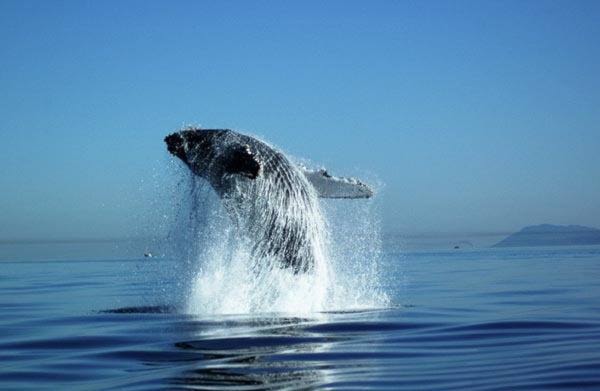by Robert Barron - Nanaimo Daily News
Humpback whales are making a comeback in the waters of the Strait of Georgia.
Simon Pidcock is the owner of Cowichan Bay-based Ocean EcoVentures which offers whale-watching tours. He said he came across the first humpback whale he had ever seen in the area in 1997. He now sees approximately 70 individual humpback whales in the strait on a regular basis.
"We seem to see more and more of them everyday," he said. "People usually come to us to see killer whales and we've become well-known for that over the years, so having the humpback whales return to local waters is an added bonus and some customers are now even coming strictly to see these whales."
By the time commercial whaling in B.C. waters and elsewhere was finally ended in the 1960s, there were as few as 1,500 humpbacks left in the entire north Pacific Ocean.
In fact, Nanaimo was home to one of the whaling stations that hunted and processed the whales.
The whaling company Pacific Whaling built a station at Piper's Lagoon in 1907 and, that year, beached 97 humpback whales at nearby Shack Island.
Soon after, in 1909, most of the commercially viable humpback whales in the waters around Nanaimo were slaughtered and the station at Piper's Lagoon was dismantled and moved to the Queen Charlotte Islands, now called Haida Gwaii.
But their numbers have rebounded since the end of the commercial hunt and it's now estimated that there are approximately 20,000 humpback whales in the north Pacific Ocean, with increasing numbers of them coming into the Strait of Georgia to feed all the time.
Caitlin Birdsall, a member of the Vancouver Aquarium's B.C. Cetacean Sightings Network, said it's estimated that up to 4,000 humpback whales may now regularly visit B.C.'s coast and the Strait of Georgia, particularly in the summer months.
She said the whales are slowly returning to their historic habitats as their numbers grow where their prey, like herring and krill, are abundant and there appears to be sufficient numbers of those species in local waters this summer.
But Birdsall said there's insufficient data at this stage to determine exactly how many humpback whales are regularly visiting the strait.
"We are hoping to see their numbers continue to recover, but now they have new challenges to face in the area," Birdsall said.
"These waters are much busier than they were a century ago and now we're seeing more vessel strikes on the whales so we're advising people to give them space and go around them. We're also seeing more whales getting caught in fish nets and gear."
Birdsall said reporting and cataloging humpback whales, and all other whales, in the Straight of Georgia is very important for scientists to get a sense of just how many whales are visiting local waters and their behaviour while they are here.
She encouraged people who observe whales to report the sighting to the Vancouver Aquarium's B.C. Cetacean Sightings Network through an online forum at www.wildwhales.org or call the toll-free number 1-866-472-9663 (1-866-Isawone).
